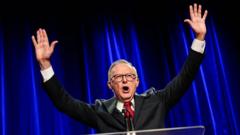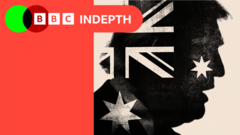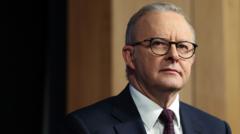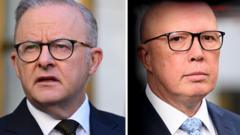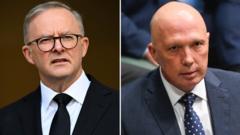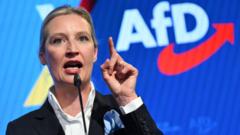The Liberal-National coalition has reunited just a week after their split, as leaders seek to address key policy disagreements and strengthen their position ahead of upcoming elections.
Liberal-National Coalition Restores Alliance After Recent Split
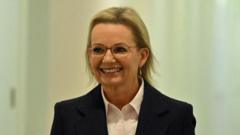
Liberal-National Coalition Restores Alliance After Recent Split
Australia's main conservative political alliance comes together again, setting the stage for new leadership.
The main opposition political alliance in Australia, composed of the Liberal Party and Nationals, has successfully reunited following a brief split that occurred just a week ago. Liberal leader Sussan Ley is anticipated to announce a revamped shadow cabinet during a press conference set for Wednesday, as reported by local media.
The coalition initially fractured last Tuesday when Nationals leader David Littleproud highlighted irreconcilable differences on various policy issues, prompting the need for a split. In his statement, Littleproud reminisced about the coalition's historical pattern of breaking apart and reuniting, affirming his commitment to collaborate with Ley in mending their relationship and potentially reshaping the coalition ahead of the next election.
Ley, who ascended to the role of Liberal leader after the party's disappointing election results earlier this month—where Labor achieved a significant victory—has pledged to guide the Liberals back toward a centre-right stance. The partnership between the Liberal and National parties, which primarily serves regional communities, has faced increasing strain recently, particularly around disputes related to climate policy and energy.
Recent discussions between the two parties have led to significant agreements, including the controversial decision to abandon plans for seven nuclear power plants while advocating for the lifting of the national ban on nuclear energy. Additional negotiated policy areas encompass investment in regional infrastructure, enhancements in internet and mobile service delivery in rural regions, and steps to bolster competition within the supermarket sector.
The longstanding Liberal-National partnership, which has its roots tracing back to the 1940s, has seen several cycles of disbandment and reestablishment over the decades, with the last major split occurring nearly forty years ago, in 1987.
The coalition initially fractured last Tuesday when Nationals leader David Littleproud highlighted irreconcilable differences on various policy issues, prompting the need for a split. In his statement, Littleproud reminisced about the coalition's historical pattern of breaking apart and reuniting, affirming his commitment to collaborate with Ley in mending their relationship and potentially reshaping the coalition ahead of the next election.
Ley, who ascended to the role of Liberal leader after the party's disappointing election results earlier this month—where Labor achieved a significant victory—has pledged to guide the Liberals back toward a centre-right stance. The partnership between the Liberal and National parties, which primarily serves regional communities, has faced increasing strain recently, particularly around disputes related to climate policy and energy.
Recent discussions between the two parties have led to significant agreements, including the controversial decision to abandon plans for seven nuclear power plants while advocating for the lifting of the national ban on nuclear energy. Additional negotiated policy areas encompass investment in regional infrastructure, enhancements in internet and mobile service delivery in rural regions, and steps to bolster competition within the supermarket sector.
The longstanding Liberal-National partnership, which has its roots tracing back to the 1940s, has seen several cycles of disbandment and reestablishment over the decades, with the last major split occurring nearly forty years ago, in 1987.





